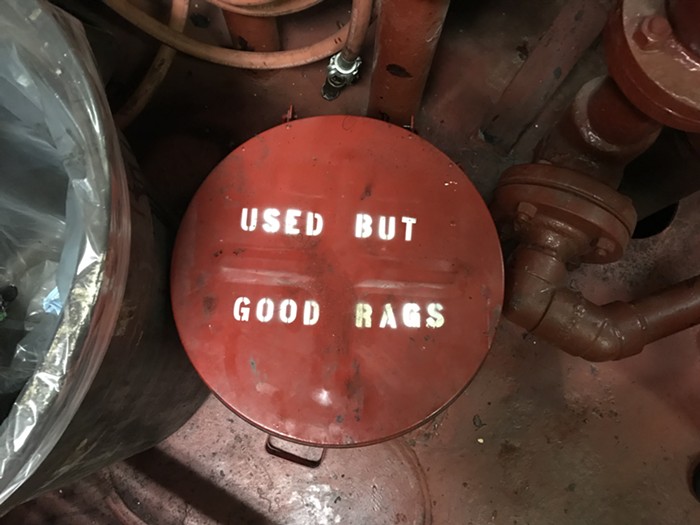
After spending over two hours on a Friday evening touring a container ship, I now understand why I was wrong to call container ships "barges*" in my post about the Sexiest Barges In Puget Sound. Container ships are not barges. But they're not container ships, either. They're actually giant, floating steam plants that smell like a barn! (Or some of them are, at least.)
The powerful odor of manure greeted me as I climbed aboard the S.S. Kauai, a 720-foot long, 26.6 thousand-ton steamship that carries 1,644 containers between Seattle and Hawaii at ~24 mph. I asked my trusty tour guide, David Thompson, 56, a veteran mariner and longtime Stranger reader, where that smell was coming from. He looked at me with a grin and said, "Cows."
On its domestic route, the Kauai travels from the land of those brontosaurus cranes in West Seattle all the way out to Hawaii. There, crane operators load the boat with cows, cars, trucks, nonperishables, refrigerated food, and stuff you find at Target. The Kauai and her crew of 24 then ship the cargo to the contiguous United States. Back at the docks, cranes lift the containers from the ship and plop them down on trucks. Truckers then transport the goods all over the country.
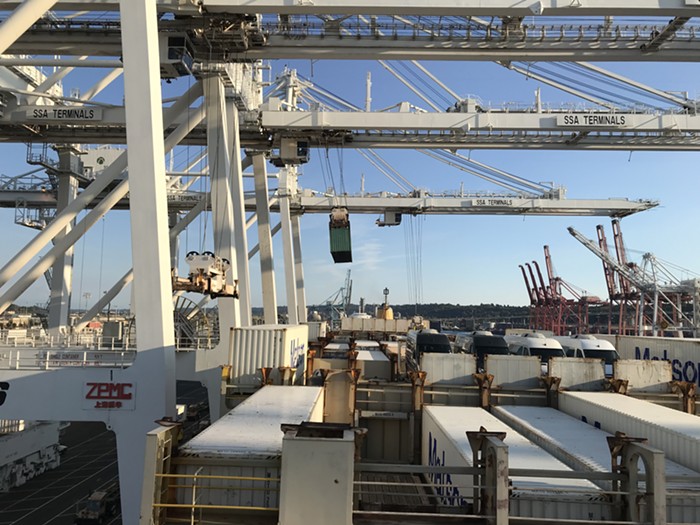
The cows from Hawaii, Thompson says, end up being raised and slaughtered by farmers in Wenatchee. Companies sell the meat back to Seattle as steaks, and the circle of unsustainable nonhuman animal massacre life continues.
After I donned some reflective safety gear, Thompson led me through the ship's cramped corridors. The place more or less looked like a dormitory. We passed an ice maker (mandated by union contract), a recreation room (they play Settlers of Catan and ping pong), and a laundry room with machines for dirty work clothes and regular clothes. The sleeping quarters look a little smaller than my studio apartment on Capitol Hill. Big enough for a closet, bed, desk, small couch, and mini-fridge.
Vintage Hawaii travel posters featuring hula dancers and sunsets lined the hallways. Thompson said the posters were leftover from the late 1970s, when the ship used to transport passengers from Seattle to Hawaii. That practice stopped once plane travel became easier and more affordable.
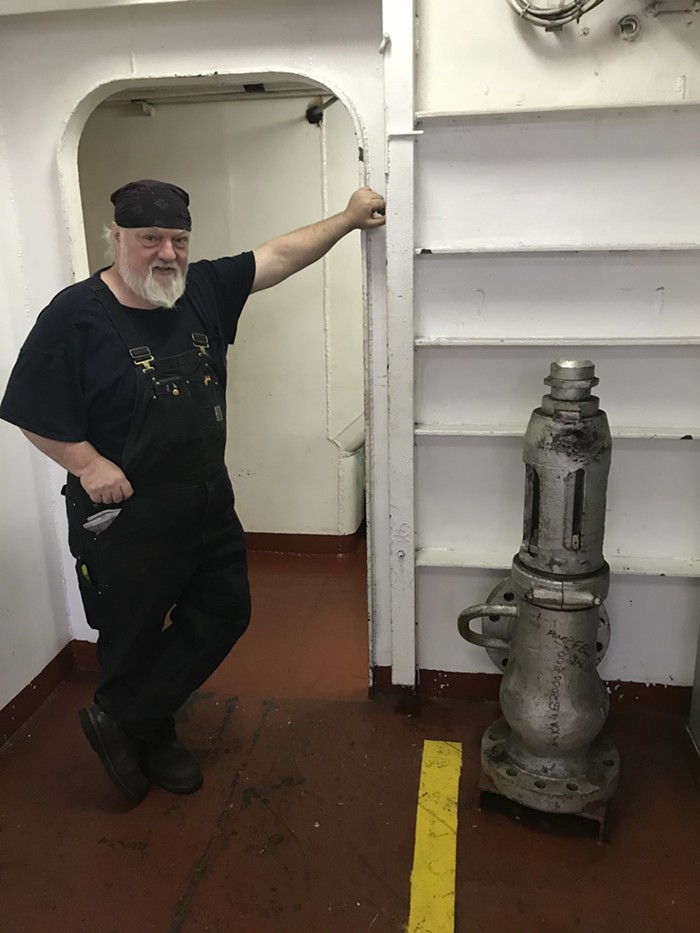
Thompson then took me to the steam engine room, a hot, steaming, buzzing, burning maze of metal that powers the whole operation. The room was so loud we needed earplugs to enter. Inside, bunker oil and grease permeated the air and stuck to my skin. "Everything down here can burn you or kill you instantly," Thompson said. "You should be nervous at all times."
With all the machinery removed, I'd guess the place is the size of two high school gymnasiums. It's so big that part of the room is actually below the waterline.
As we scurried up ladders and scooted down catwalks, Thompson described the workings of the engine with the exacting specificity of an engineer and the ear of a poet.
When the ship is underway, Thompson explained, the boiler basically converts 20 tons of water into steam, which is then superheated and pushed through the system to turn the turbines. A condenser turns the steam back into liquid water, which Thompson called "sleeping steam," and then the process starts again. At full speed, the ship's boilers push out 105,000 pounds of water per minute. The Kauai is one of the few remaining steamships in Matson's fleet, Thompson said, because steam engines are being phased out in favor of motor engines.
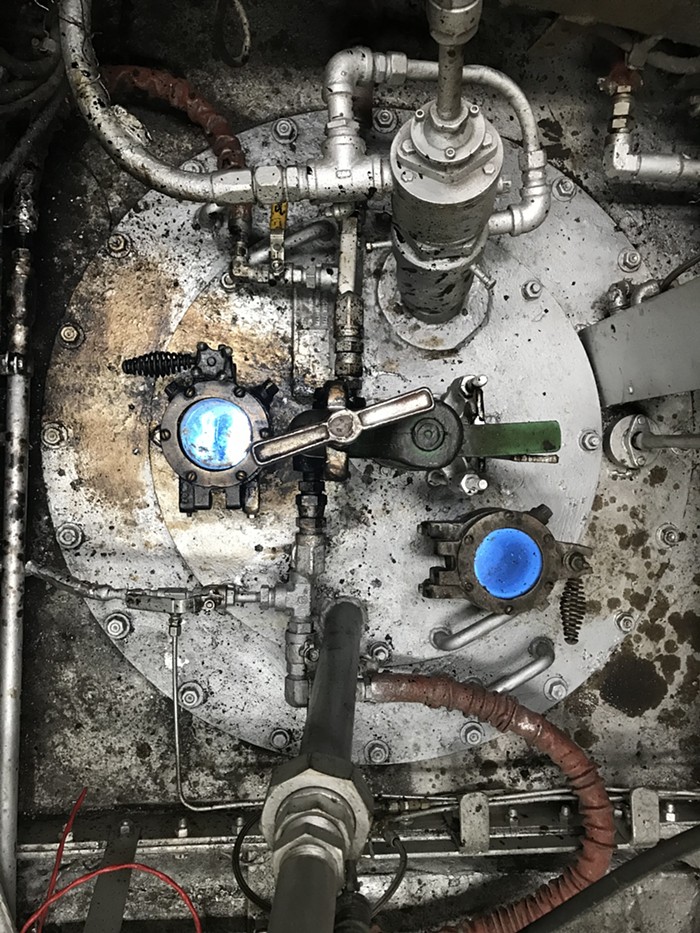
We emerged from the engine room and climbed out onto the deck of the ship. From the deck, you can see the city skyline stretching out to the north, watch cranes lifting containers onto trucks, and check out other container ships in the harbor.
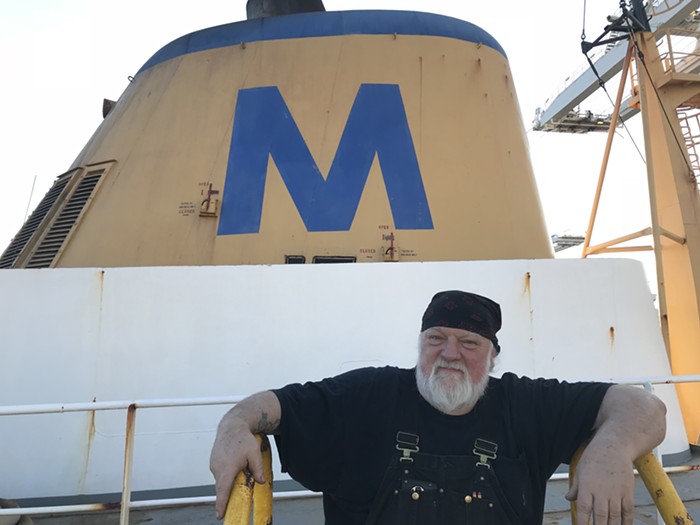
Drinking club sodas in his quarters, Thompson told me he started out his nautical career like many around here do—working at a cannery in Alaska. When a fishing boat came into harbor with a broken part, Thompson told the captain he could fix it. He did. His skill with machinery earned him work on fishing boats for a while. He ended up scoring a job as "wiper" in the engine room of a container ship and worked his way up to become a qualified member of the engine department. Now he travels all around the world on domestic and international container ship routes.
Mariners work about six to eight months out of the year. The union jobs are high-skilled, and experienced workers are paid pretty handsomely (low six figures). Some, like Thompson, live in port cities while others find cheaper housing in the Midwest.
Still, Thompson told me he's worried about where the next generation of mariners is going to come from. The jobs involve a lot of training, and he fears younger people just don't know about opportunities in the industry. He pointed to maritime academies at Ballard High School and Seattle Central College but said some blue collar jobs in his industry have gone unfilled because people aren't applying for them.
Upon hearing this news, I immediately submitted my application for captain of the S.S. Kauai. I'll let you know if I hear back.
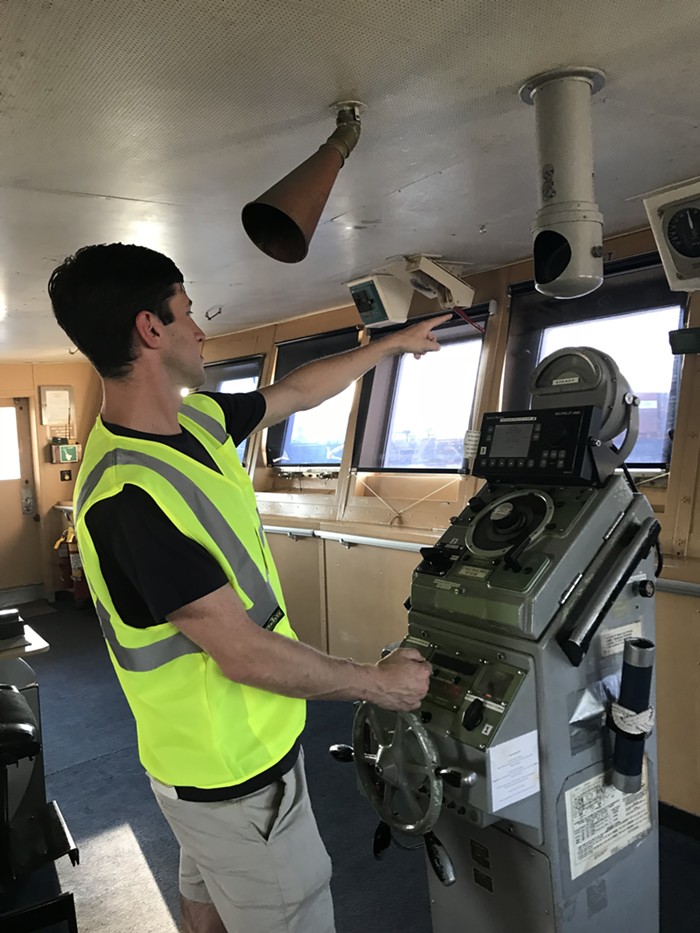
As for the debate over whether I can call a container ship a barge*, I would just like to say that Thompson is on my side! I can call container ships barges* if I want to!! Take that, barge truthers!!!
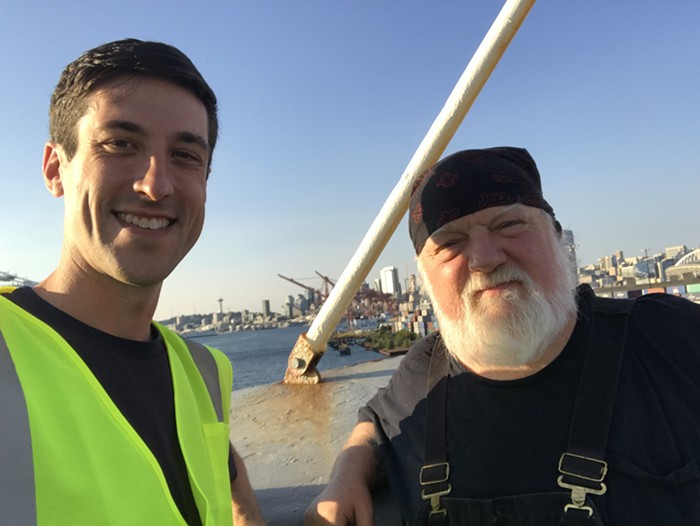
I've scheduled a tour of a barge facility in West Seattle on Wednesday, so we'll see what the barge operators have to say about my argument a little later in the week. Stay tuned.
P.S. There were a lot of good signs on the ship, but this one was my favorite.
